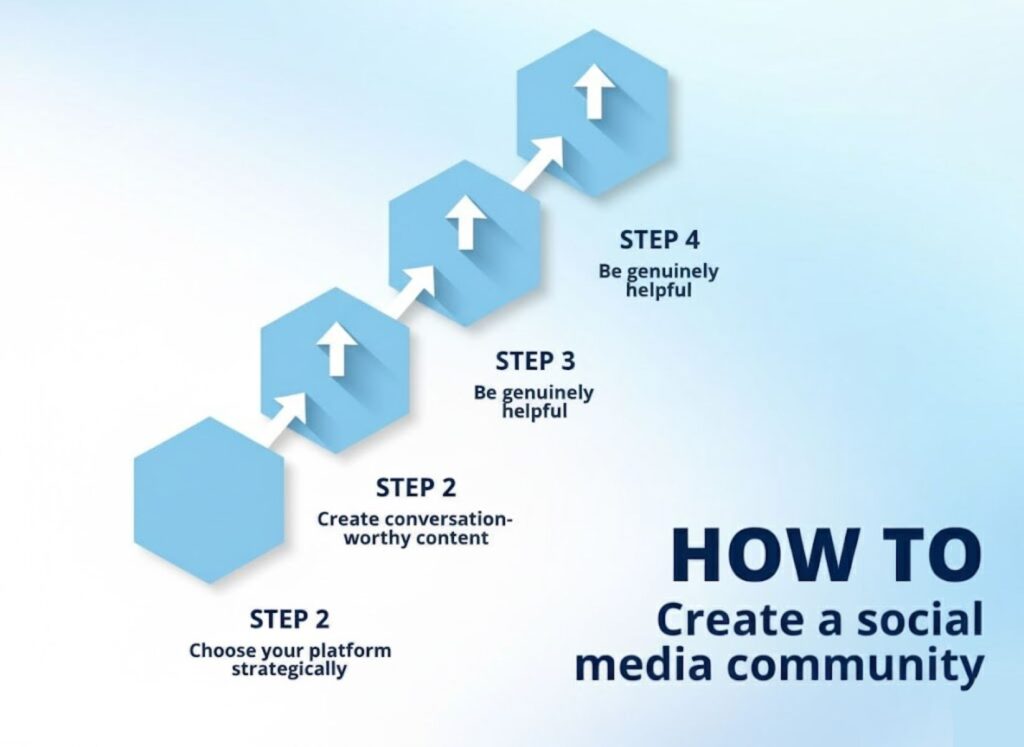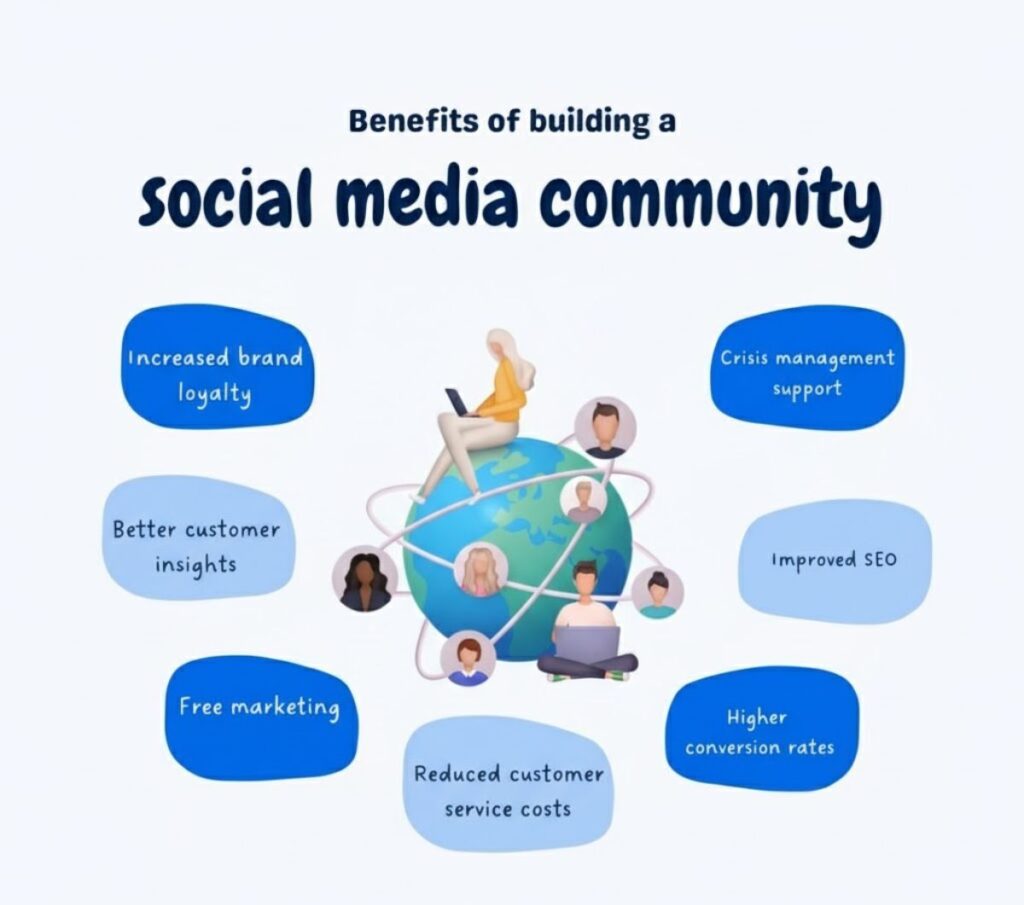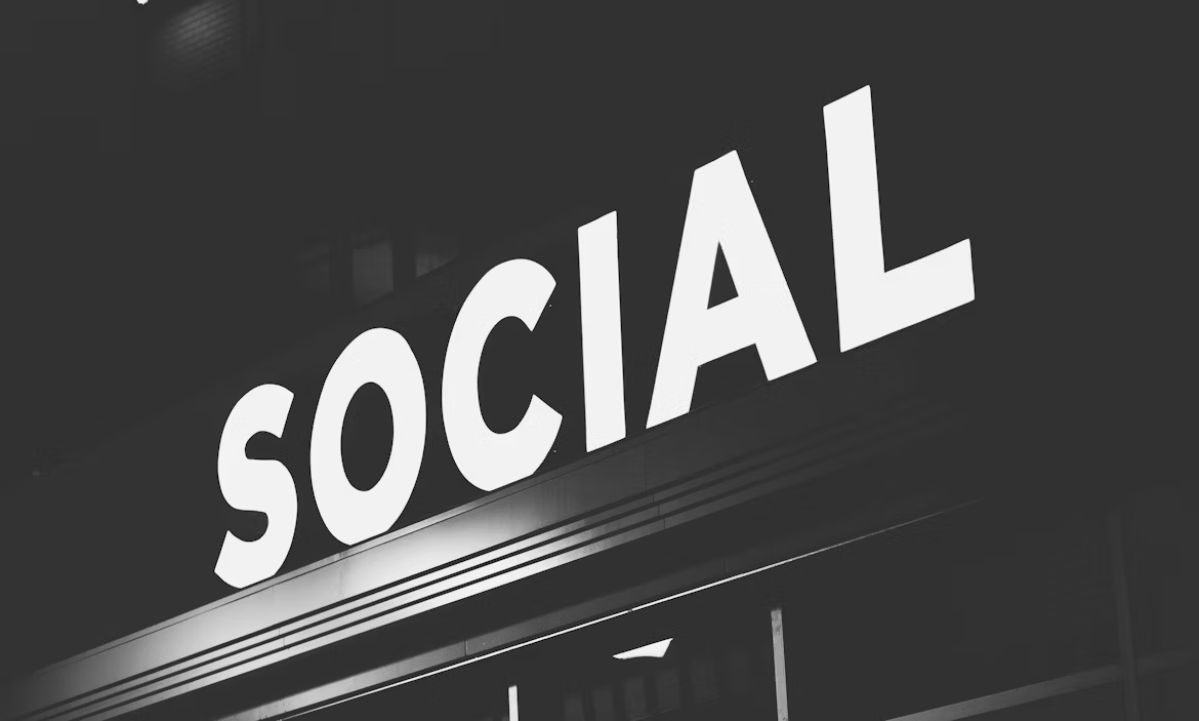Understanding What a Social Media Community Really Is & Why It Matters
Welcome to the Community Era
Let’s face it—social media in 2025 is louder than ever. Every scroll is packed with videos, ads, memes, and “viral” content fighting for your attention span, which is shorter than a 5-second Reel. Yet, amid all this noise, there’s something quietly powerful happening: communities are replacing audiences.
You’ve probably noticed it too—those brands with a million followers but barely a ripple of engagement. It’s digital tumbleweed. On the flip side, you’ve seen small creators or niche brands with a few thousand followers whose comment sections buzz with genuine conversation. That’s not coincidence; that’s community.
Building a community in 2025 is like trying to start a conversation at a party where everyone’s wearing noise-canceling headphones. You can’t shout your way through anymore. You’ve got to make people care enough to take the headphones off. And that’s where understanding the real essence of a social media community comes in.

What Exactly Is a Social Media Community?
A social media community goes far beyond the number next to your profile name. It’s not the crowd of passive scrollers—it’s the small, active circle of people who:
- Engage with your posts regularly.
- Share your values, humor, or mission.
- Interact not just with your brand, but also with each other.
Think of it this way: if social media followers are like guests at a concert, your community is the group of fans who know every lyric, bring friends along, and defend you when critics strike. That energy? That’s your social heartbeat.
A community forms when people feel like they belong, not when they’re just watching. They start creating content about your brand, answering other users’ questions, and hyping you up even when you’re not online. It’s emotional connection—an invisible bond that algorithms can’t manufacture.
Why Building a Social Media Community Matters More Than Ever in 2025
The digital landscape is shifting fast. Algorithms are unpredictable. Paid ads are getting expensive. Organic reach? Practically playing hide-and-seek. But a strong community? That’s algorithm-proof.
Here’s why:
1. Algorithms Come and Go—Communities Stay
Every time a platform changes its rules, marketers scramble. But communities live in the relationships you build. When people genuinely care about what you post, they’ll find you—even if your content doesn’t hit the For You Page.
2. Community Is the New Loyalty Program
People don’t just buy from brands—they join them. When someone feels like part of your tribe, they’re less price-sensitive, more forgiving, and more likely to recommend you to friends. It’s word-of-mouth marketing 2.0.
3. It Humanizes Your Brand
Communities add a face and a voice to your logo. You go from “that company that sells X” to “the people who really get me.” In an age of AI content, authenticity is the one thing that can’t be automated.
4. It Gives You Real Feedback
Want to know what your customers think? Ask your community. They’ll tell you what’s working, what’s broken, and what you should try next. No surveys required. Often, the best product ideas or campaign directions come straight from these interactions.
5. It Future-Proofs Your Brand
The next five years will belong to brands that nurture relationships, not just reach. Communities turn trends into movements—and movements don’t die when the trend fades.
The Mindset Shift You Need Before Building a Community
If you want to build a thriving social media community, forget the idea that you “own” your followers. You don’t. Platforms own them. What you can own is their experience with your brand.
So before you post another piece of content, ask yourself:
- Does this invite conversation or just broadcast information?
- Am I showing up as a brand or as a human behind the brand?
- Do people feel heard when they engage with me?
If your answer to those questions is a confident “yes,” you’re already halfway there.
What Makes a Community Tick in 2025
Communities today thrive on three key ingredients—Connection, Contribution, and Consistency.
- Connection – It’s emotional. You build connection through relatability, storytelling, and empathy. Whether you’re a fitness coach or a tech startup, show the people behind the brand.
- Contribution – Let your members have a voice. People join communities to participate, not to watch. Spotlight their posts, repost their wins, and let them shape the narrative.
- Consistency – You can’t build belonging if you disappear for weeks. Consistency isn’t about posting daily—it’s about showing up predictably, responding genuinely, and keeping conversations alive.
Common Myths About Social Media Communities
Let’s bust a few misconceptions that hold brands back from building authentic online tribes.
Myth #1: A big following equals a community.
Nope. Engagement and emotional connection matter far more than numbers. A small, engaged community of 500 can outperform 50,000 passive followers.
Myth #2: You need a fancy strategy or massive budget.
What you really need is intention and empathy. Communities grow on conversation, not cash.
Myth #3: Communities are only for influencers.
Wrong again. Businesses, NGOs, local cafes—anyone can build one. If your brand has a story and values, you can attract like-minded people.
Myth #4: Building a community takes years.
It does take time, but not forever. With the right approach—consistent interaction, valuable content, and a clear purpose—you can see momentum in months.
The Emotional Payoff: Belonging Beats Broadcasting
In the early 2010s, success on social media was about going viral. In 2025, it’s about going meaningful.
People crave belonging. They want to be seen, heard, and part of something that aligns with their values.
When your community achieves that, magic happens:
- Customers become advocates.
- Fans become collaborators.
- Conversations replace campaigns.
A thriving community is your brand’s heartbeat—a self-sustaining ecosystem where your people cheer you on even when you’re not speaking.
The Step-by-Step Blueprint to Build a Thriving Community Online

Welcome to the Action Stage
Now that you understand what a social media community really is (and why it’s the secret sauce of 2025 marketing), it’s time to roll up your sleeves and build one.
The good news? You don’t need millions of followers or a marketing agency. You just need strategy, empathy, and patience — and this blueprint will walk you through every stage.
Let’s break it down into clear, actionable steps you can follow, whether you’re a creator, startup, or established brand looking to reignite your audience’s energy.
Step 1: Define Your “Why” — The Foundation of Every Community
Before you create a single post or pick a platform, you need to define your purpose. Why should your community exist? What’s the emotional glue that holds people together?
Ask yourself:
- What problem am I solving for my audience?
- What conversations do I want to lead?
- What kind of people do I want in this space?
For example:
- A fitness coach’s community might exist to empower people to stay consistent together.
- A skincare brand’s purpose might be to educate and normalize real skin conversations.
- A B2B SaaS brand might aim to connect industry professionals who share insights and trends.
Your “why” becomes the heartbeat of your community. Without it, your space becomes another forgettable group chat.
💡 Pro Tip: Write your “Community Mission Statement” in one sentence. For example:
“Our community helps creators grow confidently by sharing tools, tips, and stories.”
That single sentence will guide every post, reply, and event you create.
Step 2: Choose the Right Platform for Your Community
The platform you choose determines how your members will interact, and each one has its own culture. In 2025, it’s not about being everywhere — it’s about being where your people feel most at home.
Let’s explore a few top options:
🔹 Instagram – Best for Visual Brands & Lifestyle Communities
Perfect if your content thrives on aesthetics, storytelling, or behind-the-scenes vibes. Use Reels for quick engagement, Lives for authenticity, and Close Friends or Broadcast Channels for exclusivity.
🔹 LinkedIn – Best for Professional & Thought Leadership Communities
Ideal for B2B brands, entrepreneurs, or experts. Focus on discussion-driven posts, polls, and in-depth articles. Engage in comments — LinkedIn’s algorithm loves conversations.
🔹 Facebook Groups – Best for Niche or Educational Communities
Despite newer platforms, Facebook remains unbeatable for structured group discussions. Great for private mentorship groups, learning communities, or interest-based tribes.
🔹 Discord – Best for Tech, Gaming, or Creator Communities
If your members love chatting, collaborating, or building side projects, Discord is pure gold. It allows channels for different topics, voice rooms, and real-time connection.
🔹 X (Twitter) – Best for Fast Conversations & Thought Communities
Perfect for quick, smart discussions and real-time news. Ideal for building influence in niches like tech, startups, and culture.
🔹 TikTok – Best for Creative & Entertainment-Led Communities
TikTok’s recommendation engine thrives on authenticity. Use it to create micro-communities through relatable content, trends, and duets.
🔹 Slack or Circle – Best for Premium or Business Communities
If you want to host paid or invite-only spaces with structured resources, these platforms are great alternatives to traditional social media.
Step 3: Understand Who You’re Talking To (Audience Persona)
A thriving community starts with understanding your members as humans, not metrics. Build a simple audience persona that includes:
- Age range
- Location (or time zone if it’s global)
- Interests and pain points
- Online behavior (Do they love memes or insights?)
- Why they’d want to join your community
Once you know their mindset, you’ll create content that actually resonates. For instance:
- A startup founder community might crave value posts and networking.
- A self-care community might prefer affirmations, check-ins, and mood-sharing.
When you speak their language, engagement feels effortless.
Step 4: Design the “Onboarding Experience”
When someone joins your community, the first impression decides if they’ll stay. You need to create a smooth, welcoming, and exciting entry.
Here’s how to do it right:
- Welcome Message: Send a personal “We’re glad you’re here!” note.
- Pinned Intro Post: Explain the purpose, culture, and how to engage.
- New Member Introductions: Encourage newcomers to say hi or share something about themselves.
- Starter Questions or Challenges: Get them to post something fun — like “Share your current goal in one emoji!”
People join communities for value but stay for connection. The onboarding stage builds that emotional spark.
Step 5: Create Content That Builds Conversation, Not Just Reach
In 2025, content is no longer king — conversation is. The most successful communities design posts that encourage replies, reactions, and participation.
🎯 The 3-Content Formula for Communities
- Value Content (Educate)
- Share insights, how-tos, and behind-the-scenes lessons.
- Examples: “5 Mistakes New Creators Make” or “Why Your Brand Engagement Dropped Last Month.”
- Engagement Content (Involve)
- Polls, challenges, quizzes, or discussion starters.
- Examples: “What’s one tool you can’t live without?” or “Reply with your 2025 content goal.”
- Emotional Content (Connect)
- Storytelling, vulnerable posts, or community highlights.
- Examples: “Meet Alex, one of our members who grew from 0 to 10k followers using this tip!”
Rotate these three content types to keep your community both informed and inspired.
Step 6: Encourage Peer-to-Peer Connection
A real community doesn’t revolve only around you. The magic begins when members start connecting with each other.
How to make that happen:
- Tag members who share common interests.
- Feature member stories or “Shoutout Saturdays.”
- Create collaborative threads (“Share your latest post below so we can all support!”).
- Host live chats or AMAs where members can speak directly.
Remember, your role shifts from leader to facilitator. You’re creating a safe, dynamic space where people interact freely.
Step 7: Reward, Recognize, and Celebrate Members
People crave recognition. A simple “thank you” or “feature” can make members feel valued.
Try:
- Monthly “Member Spotlight” posts.
- Loyalty badges or emojis for active contributors.
- Giveaways for helpful engagement (not just likes).
- Exclusive invites to beta tests, early drops, or virtual events.
Your goal? Make participation rewarding enough that people don’t want to leave.
Step 8: Host Events — Because Community Thrives on Shared Experiences
Even in digital spaces, shared experiences create memories. In 2025, micro-events are your secret weapon.
Event ideas:
- Live Q&As on Instagram or LinkedIn
- Themed Twitter/X Spaces
- Community Challenges (like 7-day productivity or content sprints)
- Virtual Hangouts on Zoom or Discord
💬 Example: A design community could host “Portfolio Feedback Fridays,” where members exchange reviews in real time.
These experiences don’t just drive engagement — they create belonging.
Step 9: Be Consistent and Human
You can’t automate authenticity. Schedule posts, sure — but show up when it counts.
- Reply to comments personally.
- Address members by name.
- Admit mistakes publicly and share learnings.
Being human is your competitive advantage in a world of AI-generated everything.
Step 10: Measure and Optimize
Finally, track your growth — not just in numbers, but in connection quality.
Measure things like:
- Engagement Rate: Are more people commenting and interacting?
- Active Member Ratio: How many members engage weekly/monthly?
- Community Retention: Do people stay beyond the first few weeks?
- Sentiment: Is the vibe positive and supportive?
And don’t be afraid to pivot. Communities evolve — yours should too.
Common Pitfalls to Avoid
Let’s keep it real — even the best-intentioned community builders make mistakes. Here are a few to dodge:
- Posting Without Listening
– Communities aren’t megaphones. They’re microphones. - Chasing Follower Count
– Focus on engagement, not vanity numbers. - Neglecting Boundaries
– Clear rules protect your members from spam or negativity. - Ignoring Feedback
– Communities thrive when members feel heard.
Bonus Tip: Create a “Culture Document”
This is like your community’s DNA. Outline:
- Values (e.g., Respect, Learning, Fun)
- Rules (e.g., No hate speech, constructive feedback only)
- Rituals (e.g., Weekly themes or member spotlights)
It helps maintain consistency and keeps your vibe intact as you grow.
How to Sustain, Scale, and Monetize Your Social Media Community
orm Members into Advocates
When your members start talking about your brand without being asked, that’s when you know your community has leveled up.
To make this happen:
- Encourage user-generated content (UGC).
→ Ask members to post testimonials, reviews, or experiences using a hashtag. - Create Referral Programs.
→ Reward members who bring friends. - Highlight community success stories publicly.
💬 Example:
Think of Glossier’s beauty community or Duolingo’s language lovers — their fans don’t just buy; they broadcast. They’ve turned belonging into bragging rights.
🔥 Step 7: Manage Conflict and Maintain a Healthy Space
No community is drama-free — and that’s okay. But as the leader, your job is to handle issues gracefully.
Keep Your Community Safe by:
- Setting clear rules against hate speech, spam, or disrespect.
- Having transparent moderators who act fairly.
- Encouraging private resolution before public escalation.
When people feel safe, they stay. When they see fairness, they respect leadership.
💬 Pro Tip:
Create a “Community Code of Kindness” — simple, friendly guidelines that everyone agrees on. It sets the emotional tone.
🚀 Step 8: Keep Reinventing — The 2025 Mindset
The best communities never stagnate. They experiment.
In 2025, social media platforms evolve fast — new tools, AI assistants, and emerging spaces like Threads or decentralized networks (hello, Bluesky and Mastodon).
Don’t resist evolution — ride the wave.
Try new things like:
- AI-powered topic summarizers for community discussions.
- Short-form video summaries of top posts.
- Hybrid online + offline meetups.
The goal isn’t to stay trendy — it’s to stay relevant and real.
🌟 Step 9: Measure True Success (Beyond Metrics)
In traditional marketing, success = numbers.
In community building, success = relationships.
Still, some metrics can help you track progress meaningfully:
- Active Participation Rate: How many people are consistently contributing?
- Sentiment Score: Are comments positive, neutral, or negative?
- Retention Rate: Are members staying beyond 90 days?
- Brand Mentions: Are people talking about your community outside your space?
But the real success looks like this:
- Members celebrate each other’s wins.
- Conversations happen when you’re offline.
- New ideas come from the community, not just to it.
When that happens — congratulations, you’ve built something bigger than marketing. You’ve built belonging.
🌈 Step 10: Remember — Community Is a Marathon, Not a Sprint
Every thriving community in 2025 — from indie creators to global brands — started with a few people and a lot of heart.
Your role as a community builder isn’t just to post content; it’s to nurture humans.
It’s to make people feel connected in a world that’s constantly scrolling past itself.
If you lead with empathy, show up consistently, and keep listening, your community won’t just grow — it’ll glow.
🌻 Final Thoughts
Building and sustaining a social media community in 2025 isn’t about algorithms, aesthetics, or even virality.
It’s about trust, emotion, and shared identity.
Your brand becomes part of people’s daily lives — not because of ads, but because of authentic relationships.
So, take the leap. Start small. Show up real.
And remember — every empire of engagement began with one genuine “Hey, let’s talk.”
🧠 FAQs
Q1: How long does it take to build a strong community?
It depends on consistency, purpose, and engagement quality — but with clear intent, you’ll see real traction within 3–6 months.
Q2: What’s better — a public or private community?
Private spaces build intimacy and safety; public spaces expand reach. The best strategy is a hybrid — public awareness with a private core.
Q3: How often should I post or engage?
Quality beats quantity. Show up 3–5 times a week with value and respond daily to interactions.
Q4: Can small creators or startups build communities too?
Absolutely. In fact, small communities often feel more authentic — making them easier to grow meaningfully.
🏁 The Community Equation for 2025
Belonging + Consistency + Conversation = Loyalty.
That’s the formula behind every successful digital tribe in this decade.
You don’t just want people to follow you — you want them to grow with you.
And when that happens, you’ll realize that your biggest asset wasn’t your reach… it was your relationships.

